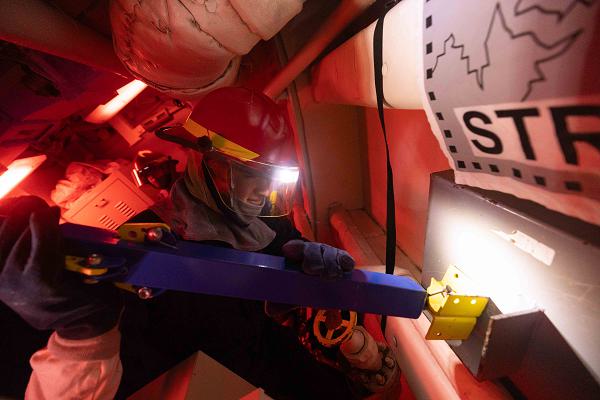
Philippine Sea. (February 12, 2025): During World War II, American Sailors valiantly battled to save their ship after Kamikaze attacks by forming “damage control” parties. Despite the chaotic situation, these teams of highly trained Seaman seemed to do the impossible, bringing their vessel back from the dead. In this photo by MC1 Ryre Arciaga, Retail Services Specialist 2nd Class James Rivera participates in a structural damage and flooding control drill aboard the Arleigh Burke-class guided-missile destroyer USS Preble.
Every ship in the Navy designates a group of Sailors who are specifically trained to quickly contain damage from fires, flooding, or other emergencies. Their primary goal is to restore a ship’s structural integrity and its ability to operate as quickly as possible. To accomplish this, damage control parties train with specialized equipment to battle fires, seal leaks, and structurally stabilize the ship.
Damage Control parties quickly assess damage, decide what repairs are needed, and their priority. While all Sailors are taught basic damage control techniques, these parties undergo extensive training in firefighting, patching leaks, and emergency shoring (process of supporting a structure with shores (temporary buttresses). During “battle station” drills, damage control teams respond to simulated attacks involving a series of constantly evolving scenarios, just as they would during the real thing.
These activities are coordinated by a central damage control authority that collects damage assessments and directs repair parties to conduct repairs. Just like their predecessors, today’s damage control parties are trained and ready to save their ship.


